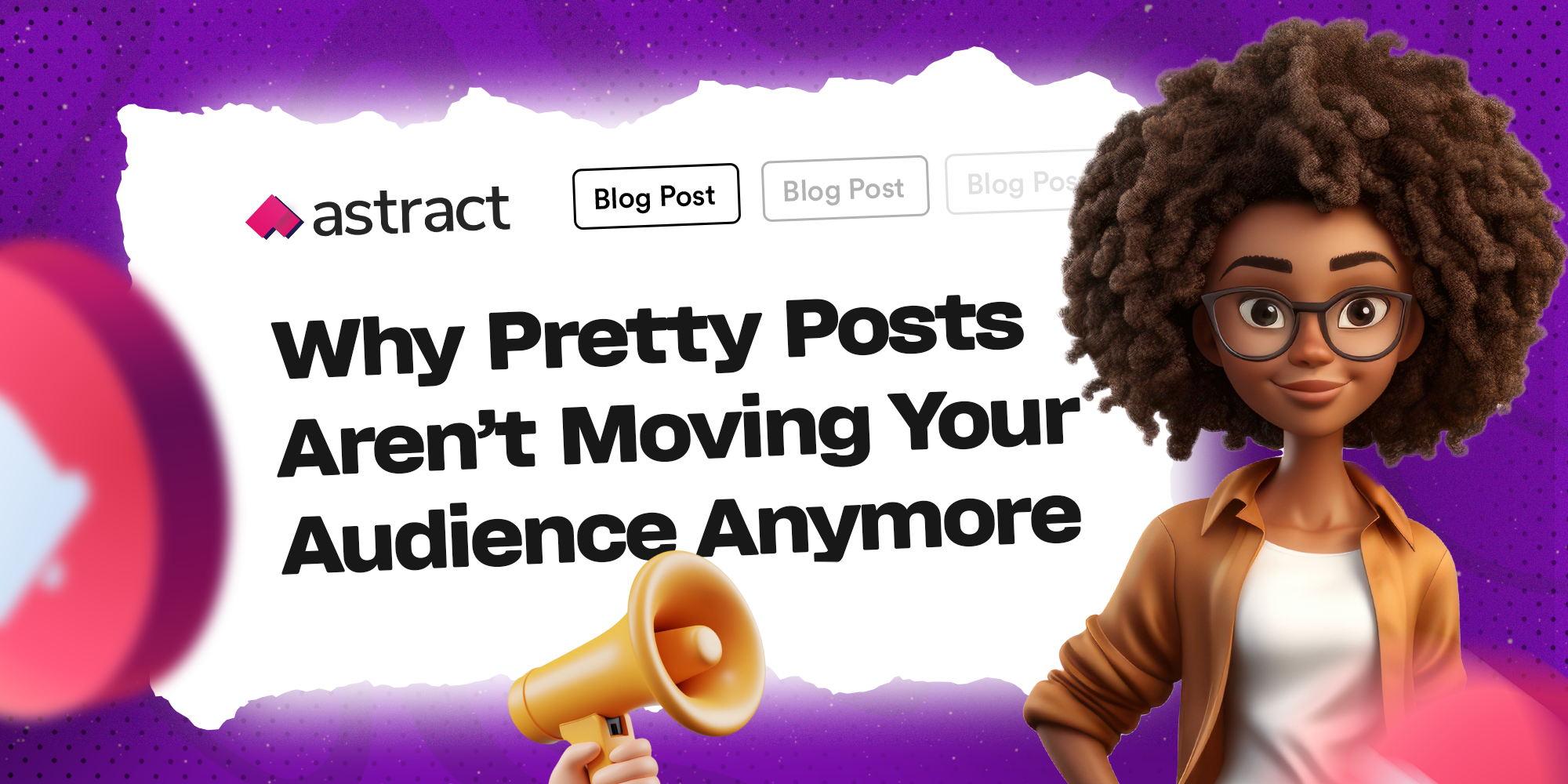Trust is one of the most powerful currencies in human interaction — and in business. It’s what makes us share secrets with friends, choose the same barber over and over, and yes, return to the same brand even when competitors are cheaper or closer.
But trust is fragile. If you discovered your closest friend had been living a double life, the bond would break. The same thing happens with brands: when you fail to deliver on promises and expectations, your customers will drift away.
The good news? Unlike personal relationships, businesses can be intentional about building and reinforcing trust. According to Edelman’s Trust Barometer, 81% of consumers say they must be able to trust a brand before buying from them. That means trust isn’t just a nice-to-have but a core growth marketing strategy.
One of the most effective ways to build trust is through the subtle signals that shape how people perceive your brand before they’ve experienced your product or services.
Let’s identify some of these trust signals and your brand can capitalize on them:
Visual Cues
Think of a first date, outfits, posture, body language matter before words are even exchanged. Now imagine a date showing up in their pajamas, you’d assume they either don’t care about the meeting or don’t hold you in high regard.
Your brand works the same way. Your visuals including but not limited to your website, graphics, logos, and social media design, are the equivalent of showing up well-dressed. They communicate credibility and respect for your audience.
Your website especially carries weight. Studies show that it takes about 50 milliseconds (0.05 seconds) for users to form an opinion about a website. That first impression can decide whether they stay or leave. For this reason, it’s worthwhile to prioritise clean layouts and consistent branding (colors, fonts, imagery).
Another-trust signal you shouldn’t overlook is performance. A fast loading website subconsciously signals professionalism and that’s why 53% of mobile users abandon sites that take longer than 3 seconds to load. Speed, in this case, is trust.
Messaging (content, copywriting, social media)
Visuals may open the door, but your messaging determines whether people walk through. Picture two salespeople: one rambles aimlessly, the other shows you a clear demo of how their product solved a real problem. Who are you more likely to trust?
Now, every good brand messaging starts with a good value proposition which simply means the unique value you offer that is different or better than other brands offerings, especially your competitors. This could be anything; a better price or an eco-friendly sourcing. Handwritten thank-you notes in every package or a donation of a percentage of your earning to a social cause. Whatever it is, ensure it surfaces in your communication and content strategy.
And don’t mistake professionalism for jargon. Too many brands assume they need to sound overly technical to be taken seriously when in reality, it is more effective to write as though you’re speaking to your audience in person. So ensure your voice and messaging fits the needs, persona, and understanding of your potential customers. Finally, don’t underestimate navigation. Making it easy for customers to find the information they need is itself a trust signal.
4. Social Validation
The digital age has made it incredibly easy to create and find reviews on businesses. In fact, 93% of consumers say online reviews influence their purchasing decisions. Having an online presence is already a trust signal but what people really want to know is what others think of you, that’s why the average customer looks for proof that others have had a positive experience with your brand.
To build trust, you need to actively work on collecting and showcasing social validation. This includes:
- Testimonials, reviews, case studies: Share them on your website, social pages, and even weave them into your packaging and messaging. (Tip: See our guide How to Collect Customer Reviews and Boost Sales With Them).
- Client logos: Only display recognizable or relevant ones to build credibility.
- Certifications, awards, and media mentions: to reassure customers
- Real people: Humans trust humans. Show the faces of your team, founders, and even real customers.
Safety Nets
Even if a customer likes your product, trust can be broken in the final moments, like at the checkout. 70% of online shopping carts are often abandoned, and one major reason is lack of trust in the payment process.
Read Also: Top Reasons for Cart Abandonment.
For e-commerce brands, this is where safety nets come in. You need to reassure customers that they’re protected before they hit “buy.” Here are some trust cues to implement:
- HTTPS + Padlock icon: Basic, but essential. It signals your site is secure.
- Clear pricing: Avoid hidden fees as unexpected charges are one of the top drivers of cart abandonment.
- Visible refund & return policies: Customers want to know they have a way out if things go wrong.
- Contact information: Real phone numbers, email addresses, and physical addresses boost credibility.
- Trusted payment gateways: Offering known options like PayPal, Quickteller, and Interswitch increases confidence instantly.
Think of this as the equivalent of a restaurant displaying its hygiene certificate near the entrance. Customers may not consciously notice it every time, but it reassures them before they commit.
Humanizing Your Brand
People don’t trust faceless corporations, they trust people. Meeting the chef in a restaurant makes the food feel safer and more valuable. The same logic applies to brands: when you humanize your presence and let your audience see the people and stories behind the work, you build emotional familiarity.
Humanizing your brand can be as simple as showing behind-the-scenes moments of your team, daily operations, or product creation. It can also be as intentional as crafting stories that reflect your values and your customer’s aspirations. Storytelling, in particular, is a powerful way to build emotional familiarity. One of our most-read articles, brand storytelling, broke down—with real-life examples from Nike and Airtel—how companies can use narrative to create lasting connections.
Ultimately, humanizing your brand means finding the story angle in different aspects of your business and allowing your personality to shine through. Whether it’s the founder’s journey, the challenges your team has overcome, or the everyday stories of customers who use your product.
Bottom Line
At the end of the day, trust is not demanded but earned. From the moment a visitor lands on your website to the way you show up in your messaging, visuals, and social proof, every detail matters and eventually adds up to a bigger picture: a brand people can trust. By paying attention to these hidden signals and humanizing your brand, you create a relationship that keeps people coming back.








